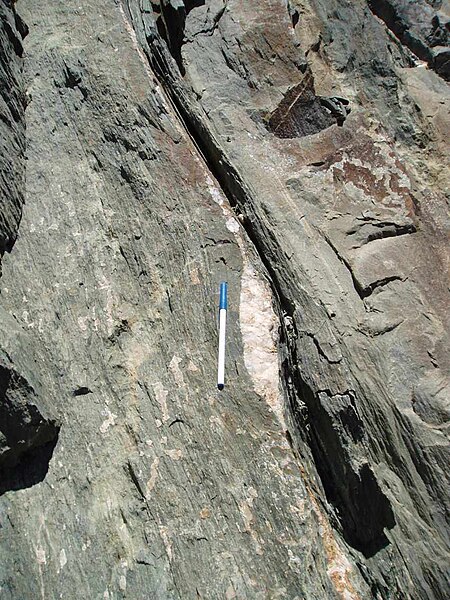In geology, shear is the response of a rock to deformation usually by compressive stress and forms particular textures. Shear can be homogeneous or non-homogeneous, and may be pure shear or simple shear. Study of geological shear is related to the study of structural geology, rock microstructure or rock texture and fault mechanics.
Boudinaged quartz vein (with strain fringe) showing sinistral shear sense, Starlight Pit, Fortnum Gold Mine, Western Australia
Asymmetric shear in basalt, Labouchere mine, Glengarry Basin, Australia. Shear asymmetry is sinistral, pen for scale
Dextral slickenside of pyrite
Typical example of dextral shear foliation in an L-S tectonite, with pencil pointing in direction of shear sense. Note the sinusoidal nature of the shear foliation.
In geology, texture or rock microstructure refers to the relationship between the materials of which a rock is composed. The broadest textural classes are crystalline, fragmental, aphanitic, and glassy. The geometric aspects and relations amongst the component particles or crystals are referred to as the crystallographic texture or preferred orientation. Textures can be quantified in many ways. The most common parameter is the crystal size distribution. This creates the physical appearance or character of a rock, such as grain size, shape, arrangement, and other properties, at both the visible and microscopic scale.
Texture in a thin section of mylonitic quartzite from the Alps, Italy
Texture in a thin section of tholeiitic basalt
Graphic granite from Norway







